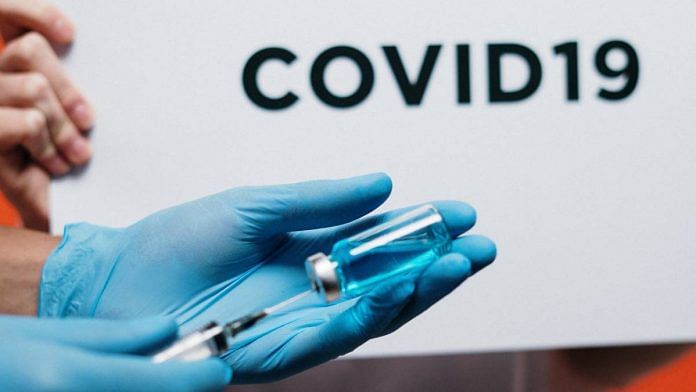New Delhi: In the eight months since Covid-19 wrought havoc on the world, India has developed two indigenous vaccine candidates that have reached the clinical trial stage. An Indian company, the Pune-based Serum Institute, has also pledged to produce 20 crore doses of a third vaccine, produced by Oxford University and British-Swedish pharma firm AstraZeneca, when it’s deemed fit for release.
This means India is involved in trials for three Covid-19 vaccines among an estimated 150 in development around the world.
Estimates by market research agency imarc pegged India’s vaccine market at Rs 9,400 crore in 2019.
India’s brush with vaccine development goes back to the 19th century, when a Ukrainian bacteriologist arrived in the country to test his vaccine for cholera, decades after the country emerged as the origin point of the first cholera pandemic.
Experts say India’s current vaccine development ecosystem started to take shape with the liberalisation reforms in the early 1990s, when private players, incentivised by the government, began to play a big role in the sector.
Also Read: Moderna Covid vaccine spurs ‘strong immune response, no serious side-effect’ in older adults
A short history of vaccination in India
The first vaccine to be tried in India was in 1893, by Dr Waldemar Haffkine, a bacteriologist who had developed a vaccine for cholera while studying in Paris.
“Though Haffkine knew the process for the development of cholera vaccine, he had proven its efficacy here in India,” public health specialist Chandrakant Lahariya wrote in his 2014 paper A brief history of vaccines & vaccination in India.
The results convinced the Indian government, then led by the British empire, to ask Haffkine to stay and develop a vaccine for the plague, which was spreading across the country by 1896.
From a two-room set up at Grant Medical College in Bombay (now Mumbai), Haffkine invented the first vaccine for the plague in 1897.
“This laboratory was called Plague Laboratory since 1899, renamed as Bombay Bacteriological Lab in 1905 and then finally named as Haffkine Institute in 1925, as it is known today,” writes Lahariya.
By the early 20th century, four vaccines were available in India — for cholera, smallpox, plague, and typhoid.
Although India had been importing the smallpox vaccine from England since 1802, the prevalence of the disease and decision to shift to a two-dose schedule is what encouraged the government to set up more vaccine manufacturing units (smallpox has since been eradicated in India).
Some of the early institutions set up were the Central Research Institute in Kasauli, Himachal Pradesh, in 1904-1905, and the Pasteur Institute of Southern India (as it was known then) at Coonoor, Tamil Nadu, in 1907, according to Lahariya’s paper.
“In the next few years, then government set up an institute for smallpox vaccine lymph production in each of the then provinces of the country. These institutes emerged as centre for vaccine and serum production and were also involved in quality research,” Lahariya writes.
Rise of the private sector
By the time India attained independence in 1947, it was self-sufficient in the production of the smallpox vaccine, but lost out on other aspects, said Dr Madhavi Yenappu, principal scientist at the New Delhi-based National Institute of Science Technology and Development Studies.
“Till the 1930s was India’s golden period with vaccine research and production. But after two world wars, these institutions were left obsolete with inadequate resources and infrastructure, even though they had the expertise,” she said.
“As vaccine technology developed around the world, India wasn’t able to keep up. We did, however, start the production of several conventional vaccines that were needed in our immunisation programmes.”
The role of the Indian government, after Independence, became a supportive one to the private sector when it came to funding and research and development. Agencies like the Indian Council of Medical Research (ICMR) and Department of Biotechnology, for example, have expanded their investments in the sector.
India launched its first immunisation programme — the Expanded Programme of Immunization (EPI) — in 1978, which involved a host of vaccines for diseases like tuberculosis, polio, and tetanus.
Several of these were imported, and all were provided for free. The EPI has been known as the Universal Immunisation Programme since 1985.
“In the 1990s, after liberalisation… the private sector was incentivised to produce vaccines and began to help out in a big way,” Yenappu said, adding, “The interest has been in the production of new and expensive vaccines, where the margin is profitable. The government still produces a lot of conventional vaccines that are unprofitable for the private sector to make.”
After liberalisation, the Serum Institute of India was among the first private companies to take on the manufacturing of the measles vaccine in India.
Also Read: India, South Africa move WTO, want Covid drugs, vaccines freed of IPR, patent rules
The Covid-19 race
While the Oxford-AstraZeneca vaccine is among the front-runners in the world, India’s indigenous Covaxin — made by Bharat Biotech and the ICMR — and ZyCoV-D by Zydus Cadilla are in phase-2 clinical trials.
But there is one catch, said Dr N.K. Ganguly, former director-general of the ICMR and a Padma Bhushan awardee.
“Deployment will be a big problem for us. We haven’t comprehensively dealt with adult vaccines because all our focus has been on child immunisation in the past. This will be the first of its kind for us,” he told ThePrint.
Although India has scaled up manufacturing to cater to the world, the supply chains within our own country need fortification, he said.
Key to this is a cold-storage chain where vaccines can be kept for preservation, to ensure availability to everyone.
While the vaccine is expected to be out by mid-2021, Ganguly recommends taking the development process with a pinch of salt.
“The vaccine could be available to us by 2021, but real deployment, till it trickles down to everyone, may not be possible till much later.”
Also Read: Oxford vaccine trials running ‘smoothly’ in India, no adverse side-effects so far






